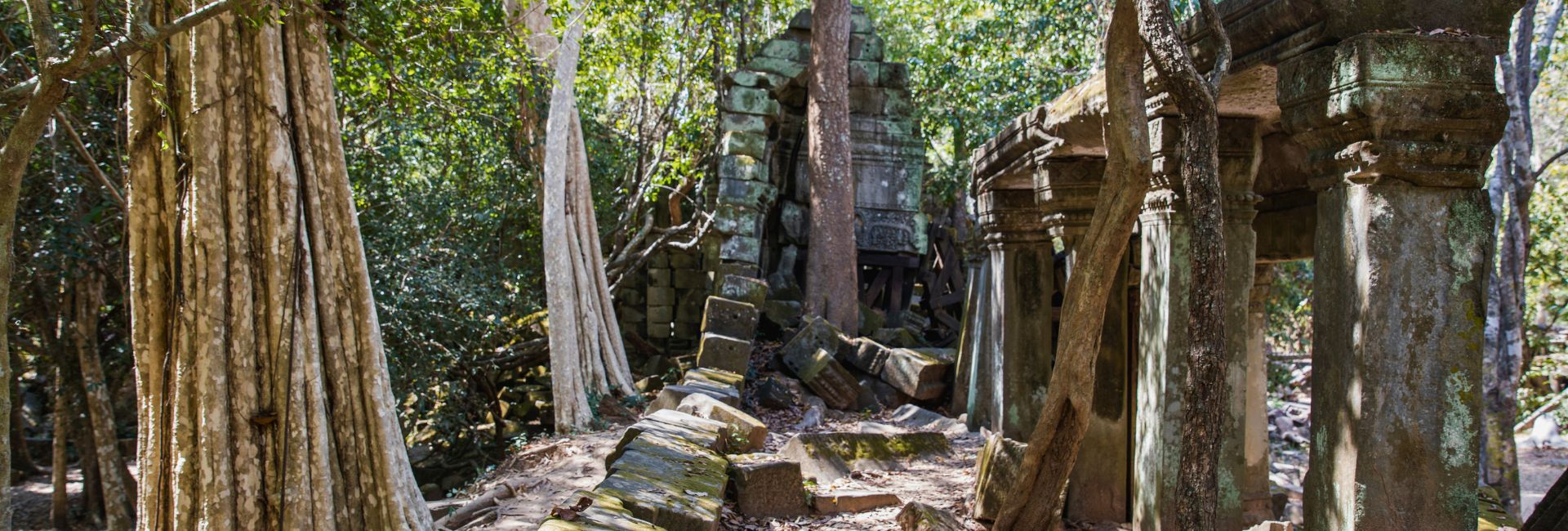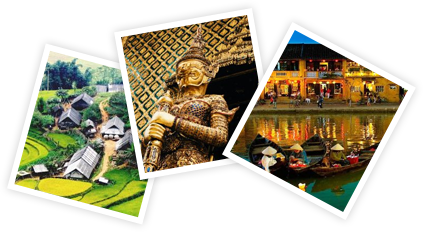Beng Mealea was built in middle of the 12th century, with later additions in the reing of the SuryavarmanII with the style of Agnkor Wat and dedicated to Hinduism. This temple is located some 40km from Siem Reap and the main UNESCO archaeological park. Visit Beng Mealea Temple with Indochina tours Cambodia.
It was built as Hindu temple, but there are some carvings depicting Buddhist motifs. Its primary material is sandstone and it is largely unrestored, with trees and thick brush thriving amidst its towers and courtyards and many of its stones lying in great heaps.
History of Beng Mealea Temple
Beng Mealea carries a fascinating history that dates back to the early 12th century during the reign of King Suryavarman VII. Built in the classic Angkor Wat architectural style, this temple was constructed as a Hindu sanctuary dedicated to the god Vishnu. The name Beng Mealea translates to “lotus pond,” reflecting the temple’s original design that incorporated water features and gardens surrounding the main structure.
Unlike its famous cousin Angkor Wat, Beng Mealea has been left largely unrestored, allowing nature to weave its way through the ancient stones. Over centuries, massive trees have grown through the temple walls, their roots creating a natural sculpture that blends human craftsmanship with jungle wilderness. This temple served as an important stop along the ancient royal highway that connected Angkor to Preah Khan of Kompong Svay, making it a significant religious and administrative center during the Angkorian period.
The temple’s layout mirrors that of Angkor Wat, featuring a central sanctuary surrounded by concentric galleries and enclosed by a moat. However, what makes Beng Mealea truly special is its current state of romantic ruin, where collapsed galleries create natural pathways and hidden chambers that you can explore like an ancient treasure hunter.
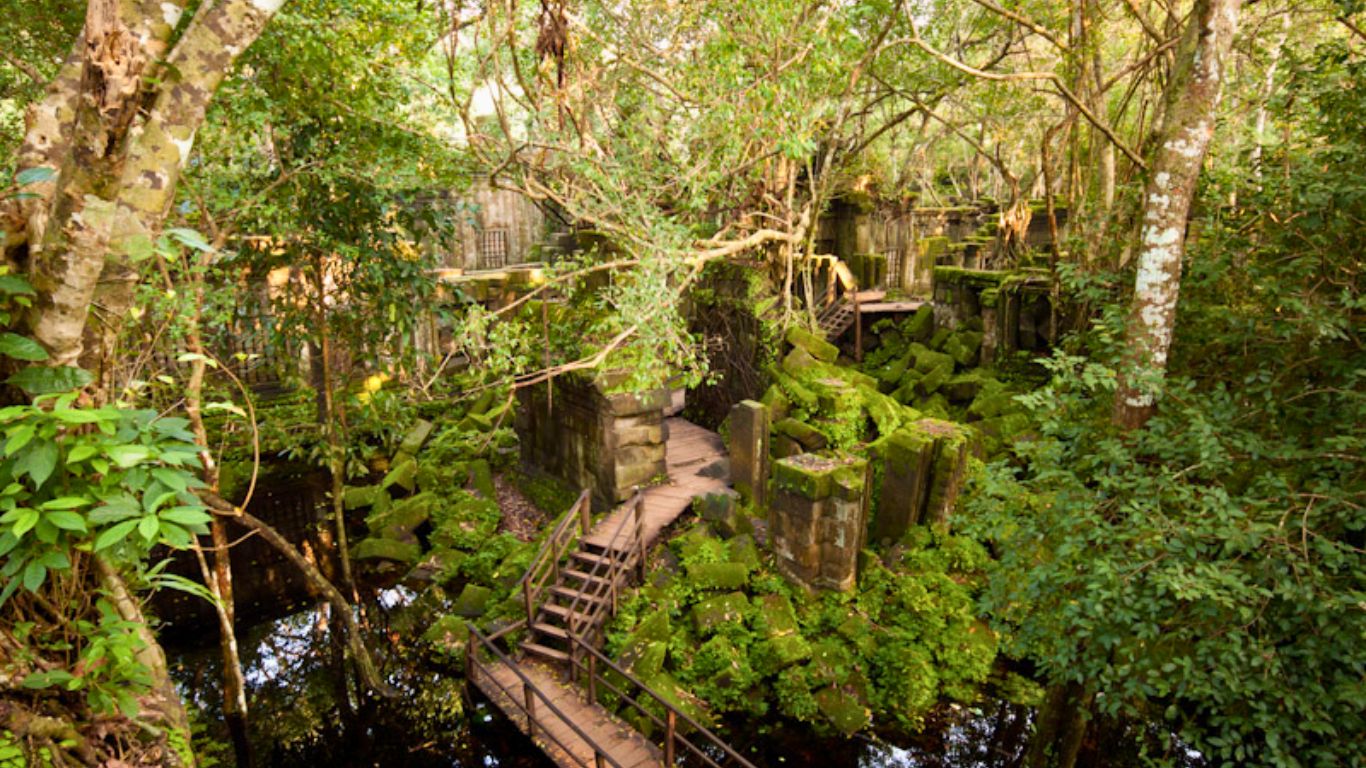
What can you expect when coming?
The Temple’s Unique Character
Visiting Beng Mealea offers you an entirely different experience from the well-maintained temples of Angkor Archaeological Park. As you approach the temple, you’ll immediately notice how the jungle has embraced the ancient structure, creating an atmosphere of mystery and adventure that’s hard to find elsewhere.
The temple complex sprawls across a large area, with much of it still buried under vegetation and rubble. You’ll find yourself climbing over massive stone blocks, ducking under fallen lintels, and navigating through corridors where sunlight filters through gaps in the collapsed roof. The wooden walkways installed throughout the temple help you safely explore the most accessible areas while protecting both you and the ancient structure.
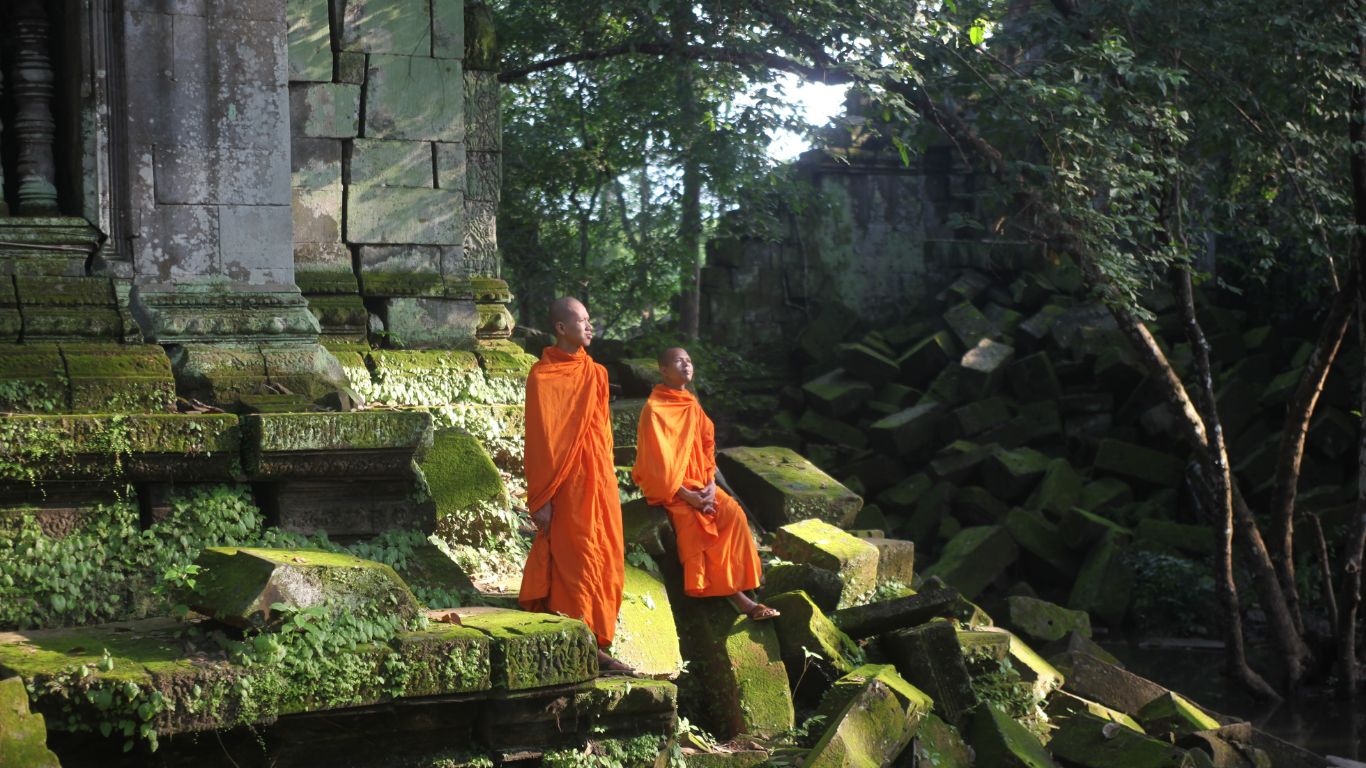
Wildlife and Natural Setting
Wildlife adds another dimension to your Beng Mealea experience. You might spot colorful butterflies dancing among the ruins, hear exotic birds calling from the treetops, or catch glimpses of small mammals scurrying through the undergrowth. The temple’s natural setting creates a symphony of jungle sounds that provides a constant backdrop to your exploration.
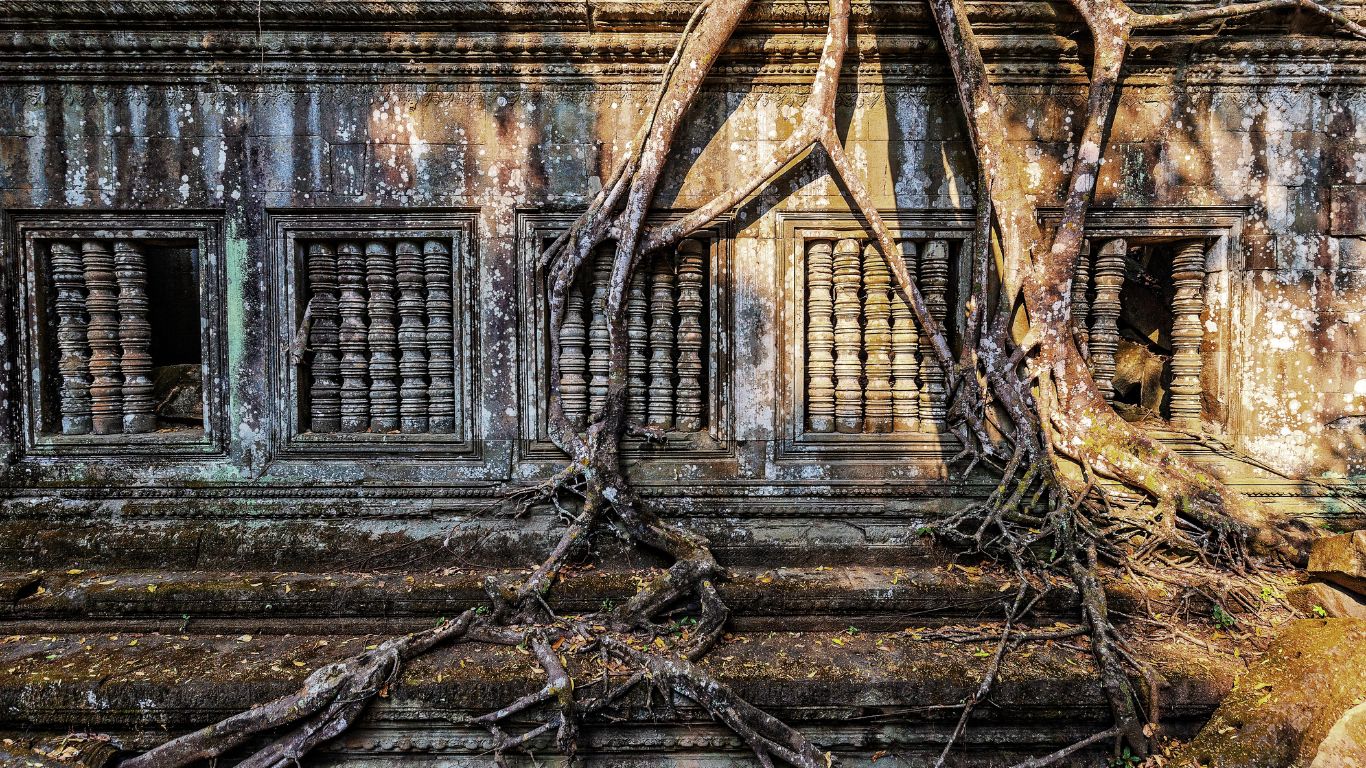
Photography Opportunities
Photography enthusiasts will find Beng Mealea incredibly rewarding. The interplay of light and shadow, the dramatic contrast between ancient stone and living vegetation, and the temple’s mysterious atmosphere create countless opportunities for stunning images. The golden hour visits are particularly magical, when soft light illuminates the ruins and creates an almost ethereal ambiance.
Best time to visit and tips
Early morning visits between 7:00-9:00 AM offer the most peaceful atmosphere with cooler temperatures and excellent lighting for photography. You’ll often have large sections of the temple entirely to yourself during these quiet hours.
Late afternoon visits from 3:00-5:00 PM provide dramatic golden hour lighting that transforms the ruins into a magical landscape. The interplay of shadows and warm sunlight creates stunning photo opportunities and an almost mystical atmosphere as the day winds down.
You should expect to spend about two to three hours exploring Beng Mealea thoroughly. The temple rewards those who take their time to discover hidden corners, admire intricate carvings that have survived the jungle’s embrace, and simply sit quietly to absorb the profound sense of history that permeates this remarkable place.
During rainy season (May-October), morning visits work best as afternoon thunderstorms are common. The wet conditions make the vegetation more vibrant but can make some areas slippery, so plan accordingly with appropriate footwear.
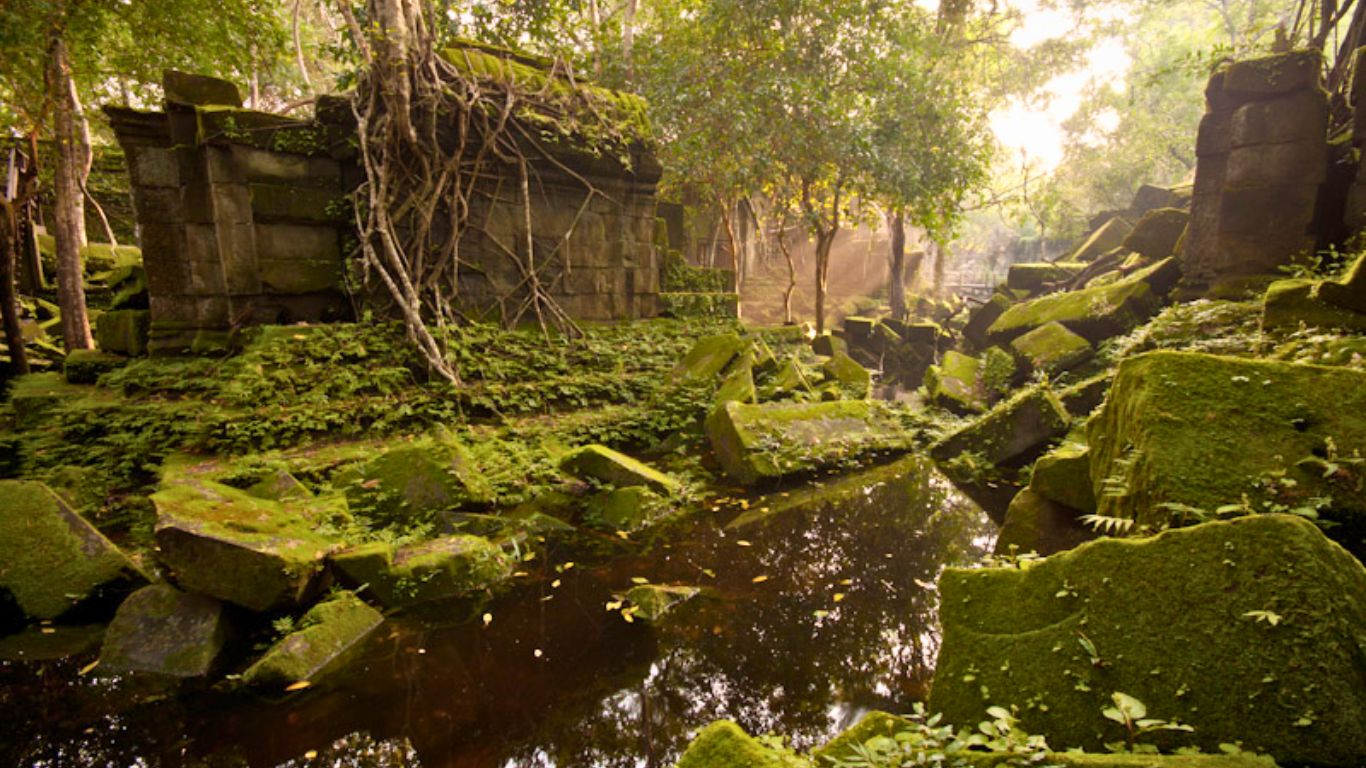
How to get to Beng Mealea?
Reaching Beng Mealea requires some planning, as it sits about 40 kilometers east of Siem Reap city center. The journey is part of the adventure, taking you through rural Cambodian countryside where you’ll witness local life away from the tourist crowds. Many visitors wonder how far from Siem Reap to Beng Mealea, and the answer is approximately a one-hour drive under normal traffic conditions. Here are 2 most common ways to get to Beng Mealea:
Getting to Beng Mealea by tuk tuk
The most convenient way to reach Beng Mealea is by hiring a tuk-tuk or private car with a driver. Tuk-tuks offer an authentic Cambodian travel experience and cost between $25-35 for a round trip, including waiting time while you explore the temple. However, keep in mind that the journey can be dusty and bumpy, especially during dry season when the roads kick up considerable dust.
Getting to Beng Mealea by private car
Private cars provide more comfort and protection from the elements, typically costing $40-60 for the round trip. This option works particularly well during rainy season when roads can become muddy and challenging for tuk-tuks. Many drivers are knowledgeable about the area and can share interesting stories about local villages you’ll pass along the way.
Some organized tours combine Beng Mealea with other nearby attractions like Banteay Srei temple or floating villages on Tonle Sap Lake, offering you a full day of diverse experiences. These Cambodia tours typically include transportation, entrance fees, and a knowledgeable guide who can provide historical context and help you discover details you might otherwise miss.
Travel Tips Information
Opening time
Beng Mealea welcomes visitors from 7:00 AM to 5:30 PM daily throughout the year. The temple doesn’t experience the massive crowds that gather at Angkor Wat for sunrise, making early morning visits particularly peaceful and rewarding. Arriving early also means you’ll enjoy cooler temperatures and better lighting for photography.
Late afternoon visits have their own charm, as the setting sun creates dramatic shadows and golden light that enhances the temple’s mysterious atmosphere. However, you should plan to complete your exploration well before closing time, as the temple can become quite dark once the sun sets behind the jungle canopy.
The temple remains open during all weather conditions, though heavy rain can make some areas slippery and more challenging to navigate. During rainy season, the lush vegetation becomes even more vibrant, creating a different but equally beautiful experience.
Entrance fee
If you only want to visit Beng Mealea and not buy a full Angkor Pass, as of 2025, you can buy a single entry ticket at the ticket office at Beng Mealea (see Google Maps). The entrance fee for Beng Mealea is $10 USD per person, payable in US dollars or Cambodian riel.
Dress code requirement
While Beng Mealea enforces a more relaxed dress code compared to active religious sites, you should still dress respectfully when visiting this sacred space. Here are the essential requirements and recommendations:
- Cover shoulders and knees: This shows respect for the temple’s religious significance and Cambodian cultural values
- Wear closed-toe shoes: Sturdy hiking shoes or comfortable sneakers are essential for safely navigating stone blocks and uneven surfaces. Sandals or flip-flops can lead to injuries during exploration
- Choose light, breathable fabrics: These work best in Cambodia’s tropical climate while ensuring adequate coverage for the sacred site.
Beng Mealea offers you an unforgettable journey into Cambodia’s ancient past, where nature and history create a powerful partnership that speaks to the soul. This remarkable temple reminds you that some of the world’s most beautiful places are those where human achievement and natural forces combine to create something entirely unique and deeply moving.
For your reference, here are our suggested Siem Reap tours which include visiting Beng Mealea:
>> Want to more delve into other off-the-beaten-path sides of Siem Reap? Visit our blog: 15 Things to do in Siem Reap – Beside visiting Angkor Wat

